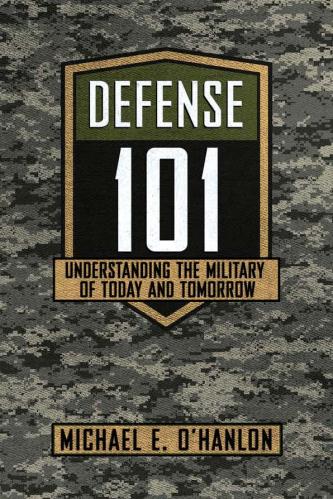Executive Summary
Since its transition to an All-Volunteer Force (AVF) in 1973 — and especially since its initial 1985 Enlisted Grade Structure Review — the United States Marine Corps has been committed to an idealized “first-term” force with an inexperienced, bottom-heavy grade structure. In pursuit of low personnel costs, the Marine Corps is unique in its commitment to high enlisted turnover which reduces aggregate experience, proficiency, and stability across the operating forces when compared to the other military services. Today’s Marine Corps enlisted manpower management practices are unnecessarily disruptive to cohesion, wasteful of talent, inimical to the Marine Corps’ warfighting philosophy, and incompatible with requirements of the modern battlefield. The hidden assumptions underpinning the way the Marine Corps fills its enlisted ranks require urgent, sober, dispassionate, thorough, and courageous reexamination.
The current Marine Corps enlisted management system was designed during the Reagan administration to remedy two specific concerns. First, it sought to drive down average per capita pay and benefit costs by limiting the number of Marines with greater than four years of service. Second, it sought to achieve uniform promotion timelines across all military occupational specialties (MOSs) by imposing pyramidshaped grade structures. By any measure, this system was successful at solving the perceived problems of 1985. Perpetuation of that paradigm, however, locked the Marine Corps into a remarkably durable process that has proved resistant to adaptation despite massive advances in technology, significant changes within American society, and mounting evidence of its inefficiency.
Over time, the Marine Corps developed a body of cultural conventional wisdom to justify its high-turnover personnel system. Senior leaders have argued that this youthful recruitand-replace model is more affordable, more physically fit, and more proficient than a more mature invest-and-retain model. Yet, as will be demonstrated, such assertions are questionable. While lance corporals are certainly cheaper than sergeants, hidden and intangible costs of the current system are much more complex than a simple comparison of salaries. While the Marine Corps lacks sufficient cost data to inform a valid comparison of alternatives, qualitative analysis suggests that an alternative, slightly older force may be more affordable than assumed. There is also ample objective evidence that the current Marine Corps enlisted force is less fit, less proficient, and less cohesive than a slightly more mature and stable alternative.
Enlisted manpower management must be modernized if the Marine Corps is to have within its ranks the more experienced and technically proficient Marines required within a highly technical, distributed, and adaptive stand-in force. To achieve the force design goals of its 38th and current commandant, General David H. Berger, the Marine Corps’ most senior leaders must find the courage and the resolve to make difficult choices and then aggressively supervise their implementation. To have the force the Marine Corps wants, it must increase investment in — and retention of — enlisted human capital in keeping with its appetite for increased capability.
By any standard, the Marine Corps system has managed to meet the internal, selfreferential measures of success as defined within its manpower management orders and directives. The professionalism, sacrifice, and hard work of recruiters and manpower professionals have met demands of the high-turnover, low-investment system. Time and again, young Marines have prevailed on modern battlefields. They have succeeded in spite of — not because of — the system in which they operate. This paper steps outside of the presuppositions of the “logical pyramid” paradigm and considers afresh whether Marine Corps enlisted human capital practices deliver the greatest possible Fleet Marine Force (FMF)1 capability for a given personnel budget.
Key findings
- The Marine Corps committed to its current enlisted human capital paradigm in the mid-1980s to address a specific concern over fairness of promotion opportunities across military occupational specialties (MOSs) and a desire to reduce personnel costs by minimizing the career force (Marines with greater than four years of service).
- Though all four services operate under common constraints, the Marine Corps’ enlisted human capital philosophy is remarkably distinct. It appears to rest upon the unacknowledged presuppositions that Marines are easily replaced, that the trained career force must be “controlled,” and that high aggregate experience and personnel stability are unnecessary.
- While all other services steadily increased the portion of their forces with greater than four years of service, the Marine Corps alone has consistently resisted doing so.
- Over time, systemic career rewards and incentives led to a de facto prioritization of resources and high-quality noncommissioned officers (NCOs) to recruiting and entry-level training (ELT) at the expense of the FMF.
- Presumptions of the superior physical fitness of a “young and lean” force are contradicted by the Marine Corps’ own fitness test performance data. Likewise, claims that junior Marines, who are predominately in their late teens, can exercise judgment under pressure comparable to more mature Marines have been decisively undermined by advances in neuroscience.
- The existing system is profoundly wasteful of human capital, expelling three of four Marines at the very time when they have proven compatible with military service and are just entering their physical and mental primes.
- The existing system is incapable of providing the more skilled and experienced force required to meet the 38th commandant of the Marine Corps’ Planning Guidance2 and “Force Design 2030”3 goals. Absent a fundamental paradigm shift, transformation efforts will fail.
The views expressed in this paper are those of the author and do not reflect the official positions of the Department of Defense, Marine Corps, or the U.S. Government.
-
Acknowledgements and disclosures
The author is grateful to fellow Marines Jim Lively, Tom Wood, Rory Quinn, Scott Cuomo, Mark McCarroll, Reggie McClam, Thomas Hobbs — and others who chose to remain nameless — for their valuable insights, challenging questions, and honest feedback. He is likewise grateful for the general officer mentors who were willing to lend their voices and elevate this discussion to the highest levels of the Marine Corps.
Dr. Frank Hoffman, Mr. Twayne Hickman, and external peer reviewers greatly improved this paper. Will Bushman and the Office of the Secretary of Defense, Personnel & Readiness provided valuable data and context. Dr. Mike Strobl of Marine Corps Manpower & Reserve Affairs devoted significant time to provide an institutional response used to refine and balance the final product.
Within the Brookings Institution, Dr. Mike O’Hanlon has mentored and assisted scores of Federal Executive Fellows over the decades and was, in 2020, ably assisted by Adam Twardowski and Leah Dreyfuss. Their advice and encouragement were decisive in the completion of this project. The ever professional, able, and thorough Ted Reinert edited this paper. Rachel Slattery provided layout and graphics.
An earlier draft of this paper along with recommendations for further research was presented to Marine Corps lieutenant generals and generals in January 2021.
-
Footnotes
- The forward-deployed, afloat, and combat-ready operating forces of the Marine Corps available for crisis response and conflict are referred to collectively as the Fleet Marine Force (FMF).
- David H. Berger, “38th Commandant’s Planning Guidance CPG” (Washington, DC: United States Marine Corps, July 17, 2019), https://www.marines.mil/News/Publications/MCPEL/Electronic-Library-Display/Article/1907265/38th-commandants-planning-guidance-cpg/.
- David H. Berger, “Force Design 2030,” (Washington, DC: United States Marine Corps, March 2020), https://www.hqmc.marines.mil/Portals/142/Docs/CMC38%20Force%20Design%202030%20Report%20Phase%20I%20and%20II.pdf?ver=2020-03-26-121328-460.






